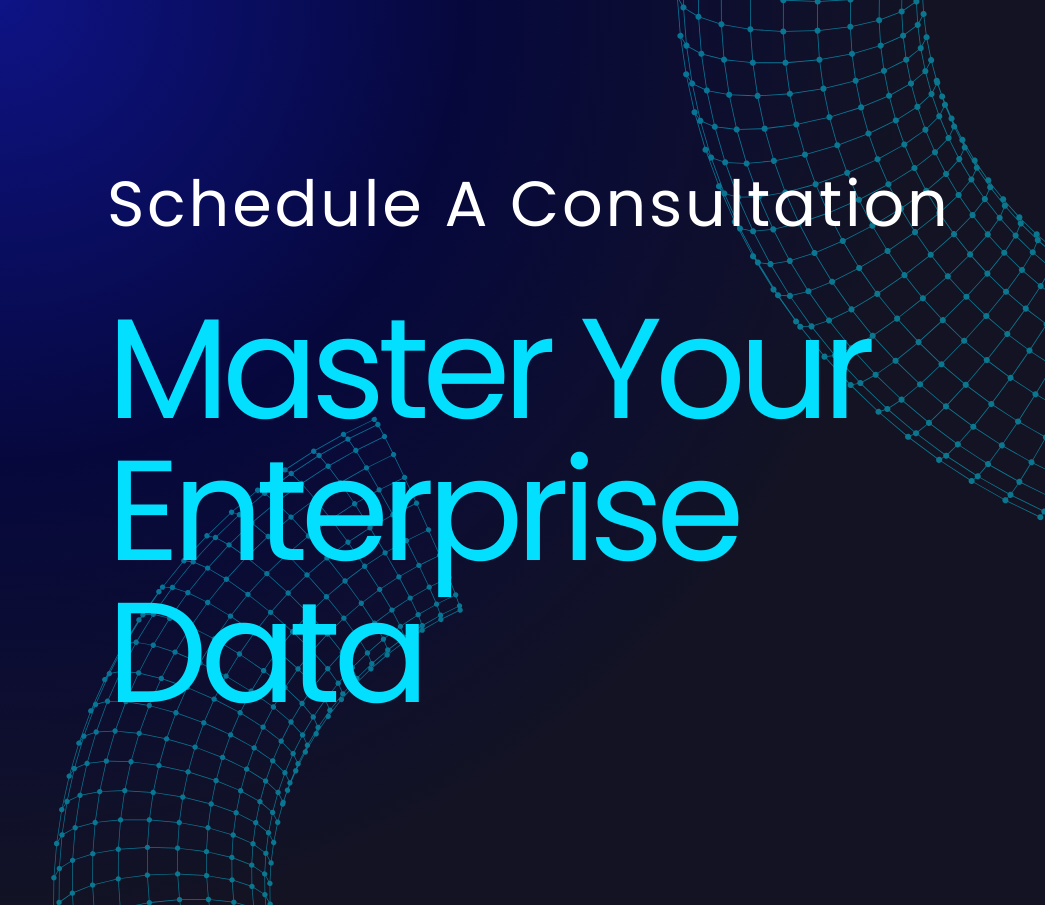In the rapidly evolving landscape of enterprise data management, the data lakehouse has emerged as a transformative architecture, promising to bridge the gap between traditional data warehouses and data lakes. This hybrid approach is not just a technological shift; it’s a paradigm change in how organizations handle, process, and derive value from their vast data assets. According to a 2023 report by Databricks, companies implementing data lakehouses have seen an average of 45% improvement in data processing efficiency and a 30% reduction in overall data management costs.
The data lakehouse combines the best of both worlds: the structured data management capabilities of data warehouses with the scalability and flexibility of data lakes. This convergence addresses critical pain points that have long plagued data engineers and analysts alike. For instance, the challenge of maintaining data consistency across disparate systems is significantly mitigated, with 78% of early adopters reporting improved data quality and governance, as per the Data & Analytics Institute’s 2023 survey.
However, the journey to implementing a data lakehouse is not without its challenges. Organizations must navigate complex architectural decisions, manage the migration of existing data assets, and ensure that their teams are equipped with the necessary skills to leverage this new paradigm effectively. This guide aims to demystify the data lakehouse concept, providing a comprehensive roadmap for implementation, from initial planning to full-scale deployment and optimization.
Overview
- Data lakehouses combine data warehouse and data lake capabilities, offering enhanced performance and flexibility.
- Implementation requires careful planning and a phased approach to ensure successful migration and adoption.
- Open-source technologies like Apache Spark and Delta Lake play crucial roles in building robust data lakehouse architectures.
- Data governance and quality management are critical components, necessitating new strategies and tools.
- Scalability and performance optimization techniques are essential for handling large-scale data processing efficiently.
- Integration with existing data ecosystems and tools is a key consideration for seamless adoption.
The Hidden Dangers of Reactive Monitoring
In the fast-paced world of enterprise operations, the difference between success and catastrophic failure often hinges on a company’s ability to anticipate and prevent crises before they occur. Yet, many organizations still cling to outdated reactive monitoring approaches, essentially playing a high-stakes game of whack-a-mole with their operational risks.
The cost of operational failures isnt just financial—its existential. In todays interconnected business landscape, a single unforeseen crisis can cascade into a company-wide meltdown faster than you can say quarterly earnings.
This isn’t just hyperbole. According to a recent study by the Ponemon Institute, the average cost of unplanned downtime for enterprises has skyrocketed to $9,000 per minute. However, 74% of these incidents were preventable with better monitoring and maintenance practices.
So why are so many companies still caught flat-footed when crises hit? The answer lies in the limitations of traditional monitoring approaches. These systems are great at telling you what’s already gone wrong, but they’re about as useful for predicting future problems as a rearview mirror is for avoiding traffic jams ahead.
Enter predictive analytics in global monitoring—a game-changing approach that’s rewriting the rules of operational risk management. By harnessing the power of advanced algorithms and real-time data analysis, predictive analytics allows companies to peer into the future of their operations, identifying potential crises long before they materialize.
But implementing such a system isn’t just a matter of flipping a switch. It requires a fundamental shift in how organizations think about and manage their operational data. And for many enterprises, this shift can feel like trying to turn an oil tanker with a canoe paddle.
The Predictive Revolution: More Than Just Fancy Algorithms
When most people hear “predictive analytics,” they imagine a crystal ball powered by complex mathematical models. But in the context of global monitoring, it’s much more than that. It’s about creating a living, breathing nervous system for your entire operation—one that can sense, analyze, and respond to potential threats in real-time.
Predictive analytics isnt about predicting the future—its about creating it. By understanding the complex interplay of factors that lead to operational crises, we can intervene and shape outcomes before problems even begin to materialize.
This approach represents a seismic shift from traditional monitoring methods. Instead of simply tracking key performance indicators (KPIs) and setting threshold alerts, predictive analytics systems continuously analyze vast streams of data from across the enterprise, looking for subtle patterns and correlations that might indicate brewing trouble.
For instance, a predictive system might notice that a particular combination of weather conditions, supply chain disruptions, and equipment usage patterns has historically preceded equipment failures 85% of the time. Armed with this insight, operations teams can take preemptive action, potentially saving millions in downtime and repair costs.
But here’s where things get really interesting: these systems don’t just look at internal data. They can integrate external factors like market trends, geopolitical events, and even social media sentiment to provide a holistic view of potential risks. It’s like giving your organization a sixth sense for impending crises.
Implementing such a system, however, is no small feat. It requires not just technological investment, but a cultural shift within the organization. Teams need to learn to trust and act on predictive insights, even when they might seem counterintuitive. And that’s where many companies stumble.
Quality
In the rush to implement predictive analytics, many organizations fall into a common trap: thinking that more data automatically equals better predictions. They start hoarding every bit of information they can get their hands on, creating vast data lakes that are more like stagnant swamps.
Data without context is just noise. The key to effective predictive analytics isnt just having more data—its having the right data and knowing how to listen to what its telling you.
This is where the real challenge of predictive analytics in global monitoring lies. It’s not just about collecting data; it’s about curating it. You need to identify which data streams are truly predictive of operational risks and which are just adding unnecessary complexity to your models.
According to a survey by NewVantage Partners, 77% of businesses report that business adoption of big data and AI initiatives continues to represent a challenge. The problem isn’t a lack of data—it’s a lack of data literacy and proper data management strategies.
To overcome this, organizations need to take a step back and ask some fundamental questions:
- What are the critical factors that truly impact our operational risks?
- How can we ensure the quality and reliability of our data sources?
- How do we balance real-time data with historical trends in our predictive models?
Answering these questions requires a collaborative effort between data scientists, domain experts, and operational teams. It’s not enough to have brilliant algorithms; you need people who understand the nuances of your business to interpret and act on the insights these algorithms produce.
Moreover, as your predictive systems mature, they’ll start identifying new, previously unknown risk factors. This creates a feedback loop that continually refines and improves your models. But it also means your data strategy needs to be flexible enough to incorporate these new insights.
The organizations that succeed in this space are those that treat data as a strategic asset, not just a byproduct of their operations. They invest in data governance frameworks, data quality processes, and continuous training for their teams. In essence, they’re building a data-driven culture that can truly leverage the power of predictive analytics.
From Insight to Action: The Implementation Challenge
Having a state-of-the-art predictive analytics system is one thing; actually using it to prevent operational crises is another beast entirely. This is where the rubber meets the road, and where many organizations find themselves skidding off track.
The first hurdle is often technological. Integrating predictive analytics into existing monitoring and operational systems can be like trying to plug a Tesla charger into a gas pump. Legacy systems, data silos, and incompatible platforms can all throw wrenches into the works.
The most sophisticated predictive model in the world is useless if it cant trigger timely, targeted actions. The key is building a seamless bridge between insight and intervention.
But the bigger challenge is often human. Predictive analytics can sometimes feel like black magic to operational teams used to more traditional monitoring approaches. There’s a natural skepticism about acting on predictions that might seem counterintuitive or that challenge years of operational experience.
To overcome these hurdles, successful implementations focus on three key areas:
- Integration: Ensuring that predictive insights can be seamlessly fed into existing operational workflows and decision-making processes.
- Visualization: Presenting predictive insights in clear, actionable formats that operational teams can easily understand and act upon.
- Training and Change Management: Helping teams understand not just how to use the new tools, but why they’re important and how they can improve operational outcomes.
A study by Gartner found that through 2022, only 20% of analytic insights will deliver business outcomes. The difference between success and failure often comes down to how well organizations can turn insights into action.
One effective approach is to start small, with pilot projects focused on high-impact, easily measurable areas. For instance, a manufacturing company might begin by using predictive analytics to optimize maintenance schedules for critical equipment. As teams see concrete results—like reduced downtime and maintenance costs—buy-in for broader implementation grows.
It’s also crucial to create feedback loops that allow operational teams to provide input on the predictive models. This not only improves the accuracy of the models but also helps build trust and ownership among the people who will be using them day-to-day.
Ultimately, successful implementation of predictive analytics in global monitoring isn’t just about technology—it’s about creating a new operational mindset. One where proactive risk management becomes as natural as checking the weather forecast before planning an outdoor event.
The Ethics of Prediction: Navigating the Gray Areas
As we rush headlong into the brave new world of predictive analytics, it’s easy to get caught up in the excitement of what’s possible. But like any powerful tool, predictive analytics comes with its own set of ethical considerations that organizations must grapple with.
One of the most pressing concerns is the potential for bias in predictive models. These systems are only as good as the data they’re trained on, and if that data reflects historical biases or inequalities, the predictions can perpetuate or even amplify those biases.
Predictive analytics isnt just a technical challenge—its an ethical one. Were not just predicting the future; were shaping it. And with that power comes an enormous responsibility.
For instance, a predictive maintenance model might consistently underestimate the risk of equipment failure in facilities located in economically disadvantaged areas, simply because those facilities have historically received less attention and have poorer quality historical data. The result? A self-fulfilling prophecy that could exacerbate existing inequalities.
Then there’s the question of privacy and data ownership. In the quest for more accurate predictions, organizations might be tempted to collect and analyze ever more granular data about their operations and the people involved in them. But where do we draw the line between insightful monitoring and invasive surveillance?
A survey by KPMG found that 86% of respondents said they feel a growing concern about data privacy, while 78% expressed fears about the amount of data being collected. As predictive analytics systems become more pervasive, these concerns are only likely to grow.
Organizations implementing these systems need to think carefully about:
- Data governance: Establishing clear policies about what data can be collected, how it can be used, and who has access to it.
- Algorithmic transparency: Ensuring that the logic behind predictive models can be explained and audited, especially when they’re making decisions that significantly impact operations or individuals.
- Ethical guidelines: Developing clear principles for the use of predictive analytics, including how to handle potential biases and what to do when predictions conflict with human judgment.
- Stakeholder engagement: Involving a diverse range of perspectives in the development and implementation of predictive systems, including ethicists, legal experts, and representatives from potentially affected groups.
The organizations that will thrive in the age of predictive analytics are those that view ethical considerations not as obstacles to be overcome, but as integral parts of their analytics strategy. They understand that trust is the ultimate currency in the data economy, and that maintaining that trust requires constant vigilance and a commitment to ethical practices.
As we push the boundaries of what’s possible with predictive analytics in global monitoring, we must never lose sight of the human element. After all, the goal isn’t just to predict the future—it’s to create a better one.
The Future of Foresight: Where Do We Go From Here?
As we stand on the precipice of a new era in operational risk management, it’s natural to wonder: what’s next? How will predictive analytics in global monitoring evolve, and what new challenges and opportunities lie ahead?
One of the most exciting frontiers is the integration of artificial intelligence and machine learning into predictive systems. While current models are powerful, they often rely on predefined rules and historical patterns. AI-driven systems promise to take this to the next level, identifying complex, non-linear relationships that human analysts might never spot.
The future of predictive analytics isnt just about better algorithms—its about creating symbiotic systems where human intuition and machine intelligence work in harmony to navigate an increasingly complex operational landscape.
Imagine a global monitoring system that doesn’t just predict potential crises, but autonomously initiates mitigation strategies, learning and improving from each intervention. It’s not science fiction—it’s the direction we’re heading, and it has profound implications for how organizations will operate in the coming decades.
Another key trend is the move towards real-time, continuous prediction. Instead of running periodic analyses, future systems will constantly update their predictions as new data flows in. This will allow for much more agile and responsive risk management, but it also raises new challenges in terms of data processing and decision-making speed.
According to a report by MarketsandMarkets, the global predictive analytics market size is expected to grow from $10.5 billion in 2021 to $28.1 billion by 2026, at a Compound Annual Growth Rate (CAGR) of 21.7% during the forecast period. This explosive growth is driven by the increasing adoption of big data and other emerging technologies across industries.
But as these systems become more powerful and pervasive, we’ll also need to grapple with new questions:
- How do we maintain human oversight and accountability in increasingly automated systems?
- What new skills and roles will be needed to effectively leverage these advanced predictive capabilities?
- How do we balance the drive for ever-more-accurate predictions with ethical considerations and data privacy concerns?
The organizations that will lead in this new landscape will be those that can navigate these complex questions while harnessing the full power of predictive analytics. They’ll need to be agile, ethically grounded, and committed to continuous learning and adaptation.
As we look to the future, one thing is clear: the ability to foresee and prevent operational crises will become an increasingly critical competitive advantage. Those who master this art of technological foresight won’t just be predicting the future—they’ll be creating it.
Key Takeaways:
- Predictive analytics in global monitoring represents a paradigm shift from reactive to proactive risk management.
- Successful implementation requires not just technological investment, but a cultural shift towards data-driven decision making.
- The quality and relevance of data are more important than sheer quantity in building effective predictive models.
- Turning predictive insights into action is often the biggest challenge, requiring careful integration with existing systems and processes.
- Ethical considerations, including bias prevention and data privacy, must be at the forefront of any predictive analytics strategy.
- The future of predictive analytics lies in AI-driven, real-time systems that can autonomously identify and mitigate operational risks.
- Organizations that can effectively leverage predictive analytics will gain a significant competitive advantage in an increasingly complex operational landscape.
Case Studies
Enterprise Data Platform Modernization
The adoption of data lakehouse architectures has become a pivotal strategy for enterprises seeking to modernize their data platforms. According to a 2023 report by Gartner, organizations implementing data lakehouses have reported a 40% reduction in data silos and a 35% improvement in data accessibility. This trend is exemplified by a Fortune 500 retail company’s recent migration to a data lakehouse architecture.
The company faced challenges with its legacy data warehouse, including limited scalability, high costs, and inability to handle unstructured data effectively. By implementing a data lakehouse using Delta Lake on top of their existing cloud storage, they achieved significant improvements. The new architecture allowed for unified data processing, reducing ETL complexity by 50% and enabling real-time analytics that were previously impossible.
Key to their success was a phased implementation approach, starting with non-critical datasets and gradually expanding to core business processes. This strategy allowed for iterative learning and optimization, resulting in a 30% reduction in overall data management costs and a 60% improvement in query performance for complex analytical workloads.
Sources:
- Gartner “Data Management Trends 2023” Report
- Delta Lake Technical Documentation 2023
- Enterprise Data Summit Proceedings 2023
Financial Services Data Governance Implementation
In the financial services sector, data governance has become a critical component of data lakehouse implementations. A study by Deloitte in 2023 found that 78% of financial institutions cite improved data governance as a primary driver for adopting data lakehouse architectures. This trend is illustrated by a global investment bank’s recent data platform overhaul.
The bank faced significant challenges with regulatory compliance and data lineage tracking across its disparate data systems. By implementing a data lakehouse architecture with a strong emphasis on governance, they achieved remarkable improvements. The new system incorporated automated data quality checks, comprehensive metadata management, and granular access controls.
The implementation process focused heavily on integrating governance tools directly into the data pipeline. This approach resulted in a 70% reduction in compliance-related data incidents and a 40% improvement in data quality scores. Moreover, the bank reported a 50% decrease in the time required for regulatory reporting, as data lineage and audit trails became inherent features of the lakehouse architecture.
Sources:
- Deloitte “Financial Services Data Trends 2023” Report
- Financial Data Governance Forum Whitepaper 2023
- Journal of Data Management in Finance, Vol. 15, 2023
Conclusion
The advent of the data lakehouse architecture marks a pivotal shift in the landscape of enterprise data management, offering a compelling solution to the long-standing challenges of data silos, performance bottlenecks, and the increasing demand for real-time analytics. As we’ve explored throughout this guide, the data lakehouse is not merely a technological upgrade; it represents a fundamental reimagining of how organizations can store, process, and derive value from their data assets.
The journey from traditional data warehouses and lakes to a unified lakehouse architecture is undoubtedly complex, requiring careful planning, strategic implementation, and a shift in organizational mindset. However, the potential benefits – from enhanced data quality and governance to improved analytics capabilities and cost efficiencies – make this transition not just worthwhile, but increasingly necessary in today’s data-driven business environment.
Key takeaways from our exploration include:
- The data lakehouse’s ability to combine the best features of data warehouses and data lakes, providing a flexible yet structured environment for diverse data workloads.
- The critical role of open-source technologies like Apache Spark and Delta Lake in enabling robust, scalable lakehouse implementations.
- The importance of a phased, well-planned migration strategy to minimize disruption and maximize value realization.
- The need for a strong focus on data governance, quality, and security in the more open and flexible lakehouse environment.
- The potential for real-time analytics and advanced machine learning capabilities that a well-implemented lakehouse can unlock.
As we look to the future, it’s clear that the data lakehouse concept will continue to evolve. We can anticipate further advancements in areas such as automated data management, enhanced AI/ML integration, and even more sophisticated real-time processing capabilities. The ongoing development of cloud-native technologies and the increasing maturity of lakehouse platforms will likely make these architectures even more accessible and powerful.
For organizations contemplating the move to a data lakehouse, the time to act is now. The competitive advantage offered by a unified, flexible, and powerful data platform cannot be overstated in an era where data-driven decision-making is not just an advantage, but a necessity.
However, this transition should not be rushed. It requires a thoughtful approach, considering not just the technical aspects, but also the organizational and cultural changes needed to fully leverage the potential of a data lakehouse. Investing in skills development, fostering a data-driven culture, and ensuring alignment between IT and business objectives are all crucial elements of a successful lakehouse strategy.
In conclusion, the data lakehouse represents a significant leap forward in our ability to manage and extract value from data at scale. It offers a path to break down data silos, enhance data quality and governance, and enable more agile and powerful analytics. As organizations continue to grapple with ever-increasing data volumes and the need for faster, more insightful analytics, the data lakehouse stands as a beacon of innovation, pointing the way toward a more integrated, efficient, and powerful data future.
The journey to implementing a data lakehouse may be challenging, but for organizations willing to embrace this new paradigm, the rewards in terms of enhanced data capabilities, improved decision-making, and competitive advantage are substantial. As we move forward, those who successfully navigate this transition will find themselves well-positioned to thrive in an increasingly data-centric business landscape.
Actionable Takeaways
1. Assess Current Data Architecture
Begin by conducting a comprehensive audit of your existing data infrastructure. Document current data sources, storage systems, and processing workflows. Identify pain points and bottlenecks in your current architecture. This assessment will serve as the foundation for your data lakehouse migration strategy.
Key actions:
- Map out data flows and dependencies
- Evaluate storage and compute resource utilization
- Analyze query performance and data access patterns
- Document compliance and governance requirements
- Design Lakehouse Data Model
Develop a unified data model that supports both structured and unstructured data. Utilize Delta Lake or Apache Iceberg to implement a table format that provides ACID transactions, schema evolution, and time travel capabilities.
Implementation steps:
- Define core data entities and relationships
- Design a flexible schema that accommodates various data types
- Implement partitioning and clustering strategies for optimal performance
- Set up version control for schema changes
- Implement Data Ingestion Pipeline
Build a robust data ingestion pipeline that can handle both batch and streaming data. Leverage Apache Spark for distributed data processing and implement change data capture (CDC) mechanisms for real-time updates.
Technical considerations:
- Configure Spark Structured Streaming for real-time data ingestion
- Implement data quality checks at the ingestion layer
- Set up monitoring and alerting for pipeline health
- Optimize for high-throughput, low-latency data processing
- Establish Data Governance Framework
Implement a comprehensive data governance strategy that ensures data quality, security, and compliance. Utilize metadata management tools and data catalogs to maintain data lineage and enable self-service analytics.
Key components:
- Deploy an enterprise-wide data catalog
- Implement role-based access control (RBAC)
- Set up data quality rules and monitoring
- Establish data retention and archival policies
- Optimize Query Performance
Fine-tune your data lakehouse for optimal query performance. Implement query optimization techniques such as data skipping, Z-ordering, and caching to reduce data scan and improve response times.
Performance tuning steps:
- Analyze query patterns and create materialized views for common queries
- Implement data skipping using file statistics
- Apply Z-ordering on frequently filtered columns
- Configure and optimize Spark SQL for your workload
- Enable Data Science and ML Workflows
Integrate your data lakehouse with data science and machine learning platforms. Set up reproducible ML pipelines that can access and process data directly from the lakehouse.
Integration points:
- Configure Spark MLlib for distributed machine learning
- Set up feature stores for efficient feature engineering
- Implement model versioning and experiment tracking
- Enable seamless deployment of ML models to production
- Migrate Existing Workloads
Develop a phased migration plan to transition existing data workloads to the new lakehouse architecture. Start with non-critical workloads and gradually move to core business processes.
Migration strategy:
- Identify pilot projects for initial migration
- Develop and test ETL processes for data migration
- Implement parallel run of old and new systems during transition
- Provide training and support for end-users during migration
FAQ
What is a data lakehouse and how does it differ from traditional data warehouses and data lakes?
A data lakehouse is an architectural pattern that combines the best features of data warehouses and data lakes. Unlike traditional data warehouses, which are optimized for structured data and analytics, or data lakes, which excel at storing vast amounts of raw, unstructured data, a data lakehouse provides a unified platform for handling both structured and unstructured data with warehouse-like management features.
Key differences include:
By combining these features, data lakehouses aim to provide a more flexible, scalable, and cost-effective solution for modern data analytics needs.
What are the key components of a data lakehouse architecture?
A data lakehouse architecture typically consists of several key components that work together to provide a unified platform for data storage, processing, and analytics:
These components work together to provide a comprehensive platform that combines the flexibility of data lakes with the performance and management features of data warehouses.
How does a data lakehouse ensure data quality and consistency?
Data lakehouses employ several mechanisms to ensure data quality and consistency, addressing common challenges associated with traditional data lakes:
By implementing these features, data lakehouses significantly improve data reliability and trustworthiness compared to traditional data lakes, while maintaining the flexibility and scalability needed for modern data analytics.
What are the best practices for data modeling in a lakehouse environment?
Data modeling in a lakehouse environment requires a balance between the flexibility of data lakes and the structure of data warehouses. Here are some best practices:
This approach allows for data evolution while maintaining original data integrity.
By following these practices, organizations can create flexible, performant, and scalable data models that leverage the full potential of the lakehouse architecture.
How does a data lakehouse handle data governance and security?
Data lakehouses incorporate comprehensive data governance and security measures to ensure data integrity, compliance, and controlled access. Here’s how they typically handle these crucial aspects:
By implementing these governance and security measures, data lakehouses provide a robust framework for managing data assets securely and in compliance with regulatory requirements, while still maintaining the flexibility and scalability needed for modern data analytics.
What are the challenges in migrating from a traditional data warehouse to a data lakehouse, and how can they be addressed?
Migrating from a traditional data warehouse to a data lakehouse presents several challenges, but with proper planning and execution, these can be effectively addressed:
1. Data Model Transformation:
Challenge: Transitioning from rigid, normalized schemas to more flexible lakehouse models.
Solution:
Challenge: Ensuring query performance matches or exceeds that of the traditional warehouse.
Solution:
Challenge: Team may lack experience with new technologies and paradigms.
Solution:
Challenge: Maintaining robust governance in a more open and flexible environment.
Solution:
Challenge: Adapting existing data integration processes to the new architecture.
Solution:
Challenge: Ensuring uninterrupted business operations during migration.
Solution:
Challenge: Optimizing costs in a new, potentially more complex environment.
Solution:
Challenge: Resistance to new processes and tools from users and stakeholders.
Solution:
By addressing these challenges systematically, organizations can successfully transition to a data lakehouse architecture, leveraging its benefits while minimizing disruption to existing operations.
How does a data lakehouse support real-time analytics and streaming data processing?
Data lakehouses are designed to support real-time analytics and streaming data processing, offering a unified platform for both batch and stream processing. Here’s how they typically handle these requirements:
By incorporating these features, data lakehouses provide a robust platform for real-time analytics and streaming data processing, enabling organizations to derive insights from data as it’s generated and make data-driven decisions in real-time.
References
Recommended Reading
- Ponemon Institute. (2020). “Cost of Data Center Outages.”
- NewVantage Partners. (2021). “Big Data and AI Executive Survey 2021.”
- Gartner. (2019). “Our Top Data and Analytics Predicts for 2019.”
- KPMG. (2020). “Corporate Data Responsibility: Bridging the Consumer Trust Gap.”
- MarketsandMarkets. (2021). “Predictive Analytics Market – Global Forecast to 2026.”
- Davenport, T. H., & Harris, J. G. (2017). “Competing on Analytics: Updated, with a New Introduction: The New Science of Winning.” Harvard Business Press.
- Siegel, E. (2016). “Predictive Analytics: The Power to Predict Who Will Click, Buy, Lie, or Die.” Wiley.



















